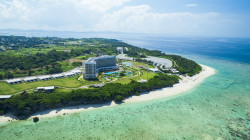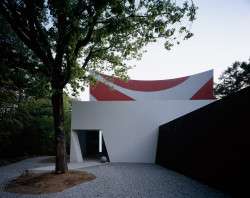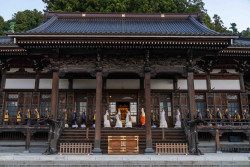
Originally published on metropolis.co.jp on February 2005

Photos by Simon Richmond
Travelers to India, like Japan, arrive laden down with some pretty hefty mental baggage. Raised on a media diet of images of poverty, heat, dust and lurid tales of the Raj, it’s easy to imagine a visit to India as less of a holiday and more of an assault course, with your stomach being the principal casualty.
Thus Mumbai, commonly known as Bombay, comes as a double shock to the system. India’s largest city is dilapidated and strains to accommodate the demands of its enormous population—currently 14 million and rising. At the same time, its collection of grand Victorian-era buildings is practically unsurpassed in India, as is its position as the country’s economic powerhouse, churning out everything from plastics to Bollywood movies. As a beacon of the modern India, the city sports gleaming shopping malls, modern multiplex cinemas and an abundance of excellent restaurants. Believe it or not, Mumbai is a gourmet’s paradise, a place to sample not only a myriad of Indian dishes but also fine contemporary cuisine in sleek restaurants that wouldn’t be out of place in Tokyo or New York.
The dining delights kick off just meters from the international airport at Peshawri (Tel: 022-2830-3030). The signature dishes of this Northwest Frontier-style restaurant within the ITC Grand Maratha Sheraton are a succulent leg of spring lamb and dahl bukhara, spicy black lentils stewed for over a day. Their delicious flavors are enhanced by the fact that you’re encouraged to eat as the locals do: with your fingers.
The cost of a meal at Peshawri would keep a family in the nearby slums in food for weeks. But even at the vastly cheaper street stalls peppering the city, food quality need not be compromised. Whether you’re gathered with the crowds enjoying the sea breezes beside the Gateway of India, Mumbai’s most famous landmark, or picking through the teeming bazaars around Crawford Market, you’ll seldom be far from a cart dishing out spicy pav bhaji sandwiches and freshly fried vegetarian snacks for a handful of rupees. Even the city’s elite regularly send their chauffeurs for take-aways from Bade Miya, a renowned kebab and tandoori stall a block from the Taj Mahal Palace Hotel in Mumbai’s tourist enclave of Colaba.

The classic Mumbai snack is bhel puri, a masala (mixture) of puffed rice, deep-fried vermicelli, potato, chilies, chopped onions, coriander and tamarind water. Locals swear the best bhel puri is served at the stalls on Chowpatty Beach, the strip of sand facing the Arabian Sea. I’m eager to dig in, but my driver Brian warns me (and my delicate foreign stomach) against it; the water they use for the sauce is highly suspect.
Instead, we steer a course for Swati Snacks (Tel: 022-5660-8405) in Tardeo. In business for over four decades but recently installed in a modern space, Swati Snacks is all stainless steel and smooth blond wood. Faithful customers stand in line to sample not only the bhel puri but also the panki chatni (savory pancake steamed in a banana leaf) and homemade ice cream in delectable flavors such as rose and ginger.
Those looking for something fancier should try the very chic Indigo (Tel: 022-5636-8999), another consistent performer in the thick of Colaba. Here, Mumbai’s movers and shakers rub shoulders with visiting celebrities (Boris Becker was spotted on a recent trip) to enjoy such appealing dishes as the grilled ginger and lemongrass-brushed king prawns and an unbelievably fluffy hot Cointreau soufflé.
Giving Indigo a run for its rupee is the über-hip Olive Bar & Kitchen (Tel: 022-2605-8228) in the ritzy Pali Hill district of north Mumbai, home to many Bollywood stars. From the Mediterranean-inspired cuisine and whitewashed, Ibiza-style interior to the outdoor chill-out zone scattered with Middle Eastern carpets and cushions, this is one restaurant that strives to be about anything but India.
Few restaurants, though, have as devoted a following as Anatashram in Kotachiwadi, a remarkable heritage area of Indo-Portuguese houses that lies hidden amid the hustle and bustle of downtown Mumbai. Known for its gruff waiters, tiny marble-topped tables and somewhat dingy atmosphere, Anatashram is a throwback to the simpler days of dining, its charm lying in the tastiness of its typical Maharashtrian cuisine such as deep fried pomfret (a local fish) and chunky chicken curry. I tuck in with gusto and feel my stomach warm with total satisfaction.
There are no direct flights from Narita to Mumbai; the options include flying via Seoul with Korean Air, via Singapore with JAL and Singapore Air, and via Kuala Lumpur with Malaysia Airlines. A taxi from the airport to Colaba should cost INR350-450 (¥825-¥1,050), depending on whether you take an AC taxi. The ride is anything from 45 minutes to two hours, depending on traffic. Among the many hotels in Colaba, good choices include Bentley’s (www.bentleyshotel.com) at the budget end of the scale (from ¥2,500), the boutique-style Gordon House Hotel (www.ghhotel.com) and, very top of the range, the Taj Mahal Palace (www.tajhotels.com). The Indian government’s tourism website is www.incredibleindia.org.
[geo_mashup_map]







